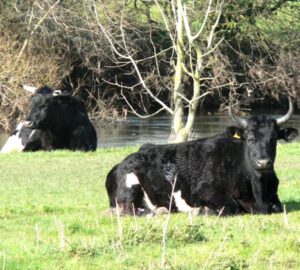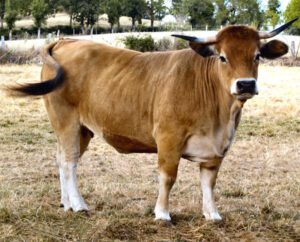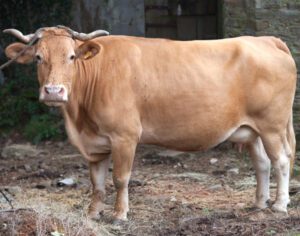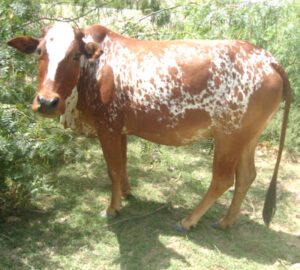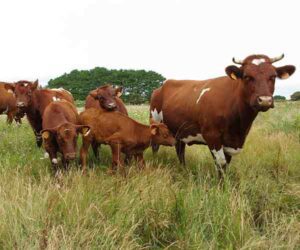The Busa cattle are a small breed of cattle which belongs to the group of the shorthorn cattle. It is native breed of cattle with numerous strains found throughout southern parts of former Yugoslavia (Dinaric Alps), Bosnia, Croatia, Macedonia and Serbia.
Some sources state that the breed has existed around the Balkan Peninsula since Neolithic times. The breed is also called by some other names such as Busha, Bosnian or Illyrian.
Busa cattle from Croatia and Bosnia were crossed with an Austrian breed in the 19th Century. And this cross is larger than the original Busa and it is exclusively grey in color.
The Yugoslav army brought Busa from Serbia during the civil war in the 1990s, and those animals were all used for meat supply.
Currently the Busa cattle and their cross breeds are widespread over the former Yugoslavia. They are mainly kept in Bosnia, Kosovo, Macedonia, Herzegovina, Serbia and parts of Croatia like Lika and Dalmatia and also in Montenegro. A Read more information about the breed below.
Busa Cattle Characteristics
Busa cattle are small sized animals with compact body. They are unicolored brown, although their color varies according to the regional strain.
For example the strain from the Macedonian strain is blue-grey, while the strain from Metohija region of Yugosalvia are red. And there are three strains in Serbia which are black, grey and red.
Both bulls and cows usually have small horns. Average body height of the bulls is about 120 cm at the withers, and about 115 cm for the cows. The mature bulls on average weight around 450 kg.
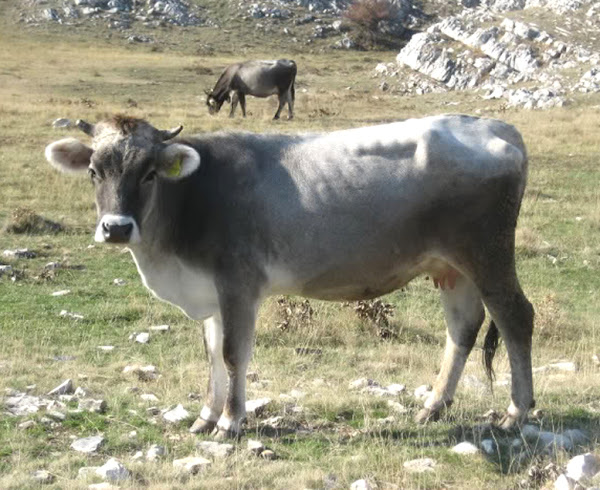
And average live body weight of the mature cows is around 300 kg. The calves of the Busa cattle are relatively very small. Average birth weight of the calves is about 15 kg. Photo from Permies and info from Wikipedia.
Uses
Busa cattle are a multi-purpose breed of cattle. They are used for both milk and meat production, and also good for using as a draught animal.
Special Notes
The Busa cattle are robust and frugal, and are well adapted on karst landscapes. They are very resistant to diseases, external and internal parasites and survive well with a minimum amount of management.
They can thrive on natural grazing and require less feed. They require relatively less care and management.
It is also said that the Busa cattle breed is very clean as they defacate in one place only compared to other cattle breeds which go anywhere. The breed is good for both milk production.
The cows are very efficient milk producers as compared to their small body size. The cows can on average produce over 1400 kg of milk per lactation.
Their milk is of very good quality containing about 6 percent fat and about 4.6 percent protein. The breed is also very good for meat production and also good for using as a draught animal.
The breed is actually very fertile, and their fertility is between 85 and 90 percent. The cows stay fertile until an age of twelve years.
The Busa cattle are very long lived animals, and average lifespan of these animals is about twenty years. However, review full breed profile of the Busa cattle in the following chart.
| Breed Name | Busa | |
| Other Name | Busha, Bosnian or Illyrian | |
| Breed Purpose | Milk, meat, draught | |
| Special Notes | Strong, well adapted to local climates, good for milk, good for meat, good for using for draught purposes, very long lived | |
| Breed Size | Small | |
| Bulls | Around 450 kg | |
| Cows | Around 300 kg | |
| Climate Tolerance | Native climates | |
| Coat Color | Many, but mainly unicolored brown | |
| Horned | Yes | |
| Milk Yield | Good | |
| Rarity | Common | |
| Country/Place of Origin | Former Yugoslavia (Dinaric Alps) |

